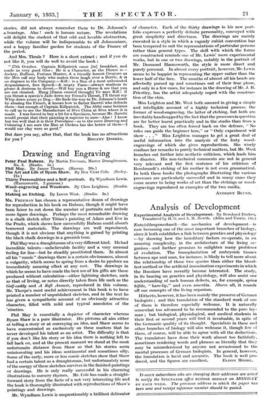Analysis of Development
.Entwicklungsmechanik—the mechanics of development—is now becoming one of the most important branches of biology, sinceit both establishes a link between genetics and physiology —by showing how the hereditary factors co-operate, in an amazing complexity, in the architecture of the living or- ganism—and further promises to enlighten many problems of evolution. The transplantation of embryonic tissues between ape and man, for instance, is likely to tell more about the relationship of those two species than either the blood- test method or the artificial insemination experiments in which the Russians have recently become interested. The study, in its bearing on genetics and physiology, will also assist our understanding of such human defects, as, for example, spina bifida, "hare-lip," and even amentia. Above all, it rounds off our concepts of the lining organism.
Hitherto, however, it has been mainly the preserve of German biologists ; and this translation of the standard work of one of them is therefore especially welcome. It is naturally somewhat too advanced to be recommended to the pure lay- man ; but biological, physiological, and medical students in their first or second years will find it invaluable, in spite of the Germanic quality of its thought. Specialists in those and other branches of biology will also welcome it, though few of them, of course, will be able to agree with all the deductions. The translators have done their work almost too faithfully., sometimes rendering words and phrases so literally that they may be misunderstood by anyone not accustomed to the mental processes of German biologists. In general, however, the translation is lucid and accurate. The book is well pro-
duced, and the figures are excellent. ELDON MOORE.




































 Previous page
Previous page